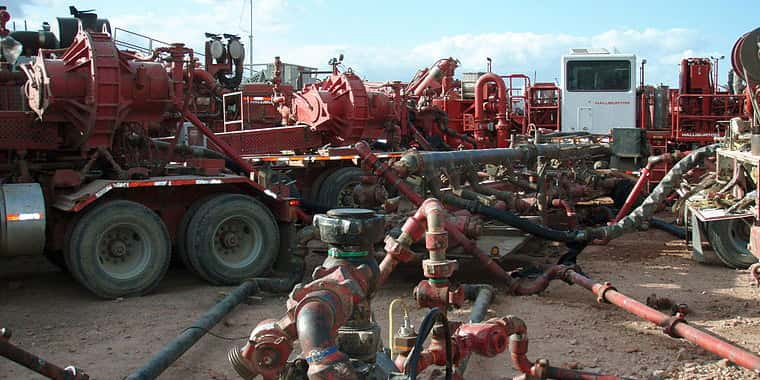The Department of Energy report was the first time an energy company allowed independent monitoring of a drilling site during the fracking process and for 18 months afterward.
PITTSBURGH (AP) — The final report from a landmark federal study on hydraulic fracturing, or fracking, found no evidence that chemicals or brine water from the gas drilling process moved upward to contaminate drinking water at a site in western Pennsylvania.
The Department of Energy report, released Monday, was the first time an energy company allowed independent monitoring of a drilling site during the fracking process and for 18 months afterward. After those months of monitoring, researchers found that the chemical-laced fluids used to free gas stayed about 5,000 feet below drinking water supplies.
Scientists used tracer fluids, seismic monitoring and other tests to look for problems, and created the most detailed public report to date about how fracking affects adjacent rock structures.
The fracking process uses millions of gallons of high-pressure water mixed with sand and chemicals to break apart rocks rich in oil and gas. That has led to a national boom in production, but also to concerns about possible groundwater contamination.
But the Energy Department report is far from the last word on the subject. The department monitored six wells at one site, but oil or gas drilling at other locations around the nation could show different results because of variations in geology or drilling practices. Environmentalists and regulators have also documented cases in which surface spills of chemicals or wastewater damaged drinking water supplies.
“There are a whole wealth of harms associated with shale gas development” separate from fracking, said Maya K. van Rossum, of the Delaware Riverkeeper group. She mentioned methane gas leaks, wasteful use of fresh water and air pollution, and said the Energy Department study confirms a point that the Riverkeeper has been making: that faulty well construction is the root cause of most problems, not fracking chemicals migrating up through rocks.
A separate study published this week by different researchers examined drilling sites in Pennsylvania and Texas using other methods. It found that faulty well construction caused pollution, but not fracking itself.
Avner Vengosh, a Duke University scientist involved with that study, just published in The Proceedings of the National Academy of Sciences, said in an email that it appears the Energy Department report on the Pennsylvania site is consistent with their findings.
The leading industry group in Pennsylvania said the Energy Department study reaffirms that hydraulic fracturing “is a safe and well-regulated technology.” Marcellus Shale Coalition president Dave Spigelmyer said in an email that the study reflects “the industry's long and clear record of continuously working to enhance regulations and best practices aimed at protecting our environment.”
The Energy Department report did yield some surprises. It found that the fractures created to free oil or gas can extend as far as 1,900 feet from the base of the well. That's much farther than the usual estimates of a few hundred feet. The Energy Department researchers believe that the long fractures may have followed existing fault lines in the Marcellus Shale or other formations above it.
The department study also ran into problems with the manmade markers meant to track possible long-term pollution. The Energy Department said it was able to track the markers for two months after fracking, but then that method had to be abandoned when it stopped working properly.
Source: Associated Press
Posted by Haylie Shipp


